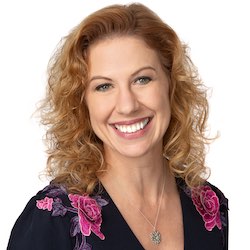5 minutes
Experiment yields bottom-line results.
Chemistry, basically defined, is a physical science where elements react in specific ways when combined with each other. What I didn’t know, until recently, is that chemistry is sometimes called the “central science” or “bridge science.”
Chemistry earns this title because it connects the other natural sciences, including biology, geology and physics. In the credit union world, it has become clear to me that retail delivery is similar to chemistry, as it combines all the elements of organizational success.
Organizing Around Retail
In mid-2013, Educational Systems Federal Credit Union created a retail delivery division. This brought together all member touch points, including marketing, business development, community and public relations, as well as our 11 branch locations.
The hypothesis was that by combining the areas of the CU that “drive business” with the areas that “fulfill business,” Educational Systems FCU could re-organize its focus. We began by concentrating on growing auto loans while providing a consistent member experience in every channel.
The challenge was how to prove our theory. Would the aggregation of member touch points into the newly formed retail delivery division yield bottom-line results?
Four Elements to Success
1. Provide a consistent message in every channel: The first undertaking for the Educational Systems FCU Retail Delivery Division was to establish consistency. Everyone needed to be on the same page, saying the same things.
Consistency is the basic principle of an integrated brand and successful retail delivery. It means taking the tangible aspects of your brand—logo, tagline and imagery—and transforming those into intangible practices such as messages and service delivery.
At Educational Systems FCU, that started with our core purpose of “Serving the Education Community.” Championing who we are and what we do brought the four pillars of our brand—our core purpose, mission, vision and values—clearly into focus for executives and tellers alike.
The CU’s core purpose helps frame decisions and service delivery throughout our organization.
Standardized greetings and closings, whether we were talking with a member face to face, through email or on the phone, are another important element we’ve implemented.
When greeting a member, we ask, “How may I help you?” Equally, conversations are infused with, “Is there anything else I can help you with?” Finally, we close each conversation with, “It’s a pleasure helping you!” Everyone at the CU employs these standard greetings and closings, from our CEO to back-office support employees.
As an example of how applying a consistent message in every channel creates the intangible side of the brand, I recently fielded a call from a new marketing director at a regional credit union. She told me her CEO had visited one of our branches and mentioned that it “felt like the credit union that served the education community.” She wanted to know how to create that “feeling” for her members.
That consistency and “feeling” didn’t happen overnight. We worked throughout 2012 and 2013 to ensure our branches and offices reflected our membership and embodied our core purpose.
Little changes included painting accent walls “school bus yellow,” using initials that conjure up the visual representation of the periodic table, and using books, mortarboards and the iconic “number-two pencil” as imagery to create an experience reflective of, and relevant to, our membership.
2. Communicate organizational priorities: Soon after the re-organization that created the retail delivery division, Educational Systems FCU President/CEO Chris Conway (a CUES member), posted the organizational priorities on our intranet, “The Chalkboard.”
He explained our growth strategies, including the No. 1 priority to increase auto loans. This priority was then communicated in town hall meetings and reiterated by the executive team.
Additionally, we rewrote our incentive plans to align with our organizational priorities, creating clear goals and rewards for employees.
3. Explain the “why” to employees: While we explained the “what”—to make more auto loans—we found that the essential bonding element to our retail delivery chemistry was to explain the “why.”
We answered the question, “Why should a member choose to refinance or finance an auto loan with Educational Systems FCU?”
Because our core purpose is serving the education community, every auto loan comes with the option to skip payments in the summer, keying on the idea that educators are traditionally paid 10 months a year instead of 12. Plus, we believe a 90-day first payment deferment on an auto loan helps educators plan their car purchases when they can best afford them.
Because our employees understand the “why” of our products and services, they can clearly articulate that value to members.
4. Celebrate success: To continue our focus on the top organizational priority of auto loan acquisition we celebrated positive outcomes weekly.
We recognized top employees and distributed such weekly prizes as gift cards to local merchants. Those who’d found more success sharing the “why” with members were urged to share their insights.
We also recognized individual branch and contact center performance with weekly updates to senior managers and branch managers.
Retail Delivery a Success
Experimentation based on sound business concepts can yield exceptional results. Momentum grew throughout summer and fall, as we achieved record loan growth, including an 11.62 percent increase in auto loans from July through December (over the first half of 2013). During that period, we experienced three of the best loan months in our history!
For our CU, the results impacted more than just the bottom line. We created a culture where employees are now talking numbers, seeking performance indicators and inquiring about organizational financials at the end of every month.
At Educational Systems FCU, we discovered that providing a consistent member experience in every channel, communicating priorities with employees, explaining the “why” and celebrating every success showed strong positive correlation with our growth measures. It also proved our hypothesis that our new retail delivery division does yield bottom line results!
Bryn C. Conway, CUDE is SVP/retail delivery at $730 million/90,000-member Educational Systems FCU, Greenbelt, Md.






